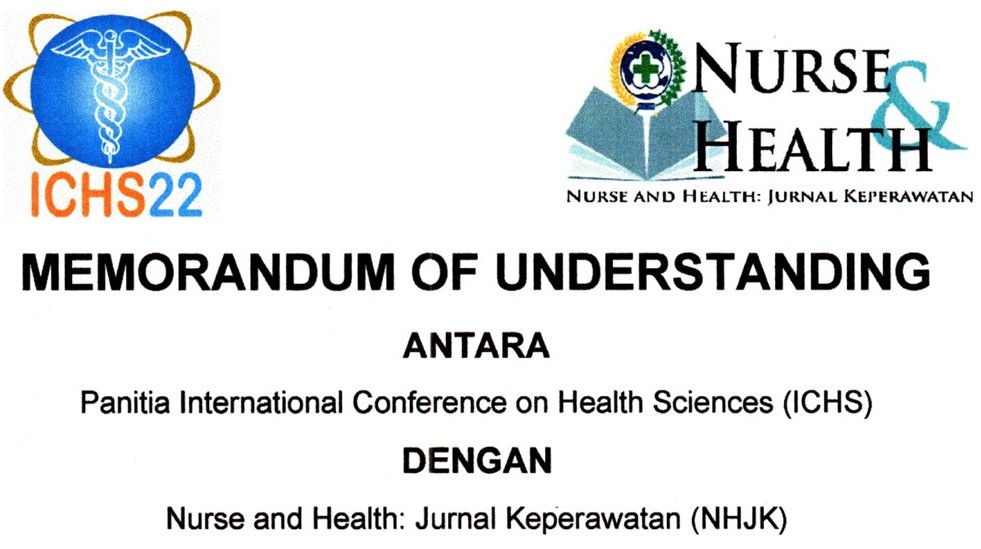THE EFFECT OF HEALTH PROMOTION ABOUT DISASTER MANAGEMENT TOWARDS THE LEVEL OF KNOWLEDGE OF YOUTH RED CROSS MEMBERS
Abstract
Background: The potential for natural disasters in Bengkulu is very worrying. Mukomuko is one of the districts in Bengkulu Province which has a geographical location prone to earthquakes and Tsunami. Preparedness and disaster mitigation in school students is still low. Members of the youth red cross in senior high schools have never been exposed to disaster management.Objectives: The aim of this study was to determine health promotion to increasing knowledge about disaster management on students of youth red cross members.Methods: This study used pre and posttest without control group design. Population in this study were all students of youth red cross members at SMA Negeri 1 Mukomuko Bengkulu with the amount of 30 people. Sampling technique in this study used total sampling obtained samples were 30 people. Collecting data in this study used primary data obtained from SMA Negeri 1 Mukomuko and secondary data with filled out questionnaire.Results: The results of this study showed: (1) from 30 people there were 13 people (43,3%) before treatment were good knowledge, 16 people (53,3%) before treatment were moderate knowledge, and 1 people (3,3%) before treatment were low knowledge; (2) from 30 people there were 18 people (60%) after treatment were good knowledge and 12 people (40%) after treatment were moderate knowledge; (3) results of Paired Sample t-test obtained value of t = 3,023 with p-value = 0,005<0,05 significant means there was significant differences between knowledge about Disaster Management on Students before treatment and knowledge about Disaster Management on Students after treatment.Conclusion: The importance of direct information from health workers regarding disaster management has a continuing impact to be applied by youth red cross students when a disaster occurs. Key words: Health Promotion, Knowledge, Disaster Management.Downloads
References
Aknam, A. (2016). Subduksi Lempeng Indo-Australia Pada Lempeng Eurasia Di Pantai Barat Sumatera Barat. Sainstek: Jurnal Sains Dan Teknologi, 3(1), 52–56. Retrieved from http://ecampus.iainbatusangkar.ac.id/ojs/index.php/sainstek/article/view/33
Amri, A. (2017). Pendidikan tangguh bencana: mewujudkan satuan pendidikan aman bencana di Indonesia. Jakarta: Kementerian Pendidikan dan Kebudayaan.
BNPB. (2013). Indeks Risiko Bencana Indonesia. Retrieved from Direktorat Pengurangan risiko Bencana Deputi Bidang Pencegahan dan Kesiapsiagaan website: http://weekly.cnbnews.com/news/article.html?no=124000
BNPB. (2017). Buku Pedoman Latihan Kesiap Siagaan Bencana : Membangun Kesadaran, Kewaspadaan, dan Kesiap Siagaan dalam Menghadapi Bencana.
CAH. (2015). Enam Kecamatan di Mukomuko Rawan Bencana Tsunami. Retrieved December 15, 2018, from https://www.beritasatu.com/nasional/301087/enam-kecamatan-di-mukomuko-rawan-bencana-tsunami
Dien, R. J. (2015). Pengaruh Penyuluhan Kesehatan Terhadap Kesiapsiagaan Menghadapi Bencana Gempa Bumi Pada Siswa Smp Kristen Kakaskasen Kota Tomohon. Jurnal Keperawatan, 3(2).
Husna, C. (2012). Influencing Factors on Disaster Preparedness in RSUDZA Banda Aceh Cut Husna. IIdea Nursing Journal, III(2), 10–19.
Notoadmojo, S. (2012). Promosi kesehatan dan perilaku kesehatan. Jakarta: Rineka Cipta.
Nurkartika, D., Murakami, A., & Chagan-yasutan, H. (2018). International Journal of Disaster Risk Reduction Integrated health education in disaster risk reduction : Lesson learned from disease outbreak following natural disasters in Indonesia. International Journal of Disaster Risk Reduction, 29(July 2017), 94–102. https://doi.org/10.1016/j.ijdrr.2017.07.013
Pascapurnama, D. N., Murakami, A., Chagan-Yasutan, H., Hattori, T., Sasaki, H., & Egawa, S. (2018). Integrated health education in disaster risk reduction: Lesson learned from disease outbreak following natural disasters in Indonesia. International Journal of Disaster Risk Reduction, 29(July), 94–102. https://doi.org/10.1016/j.ijdrr.2017.07.013
Saanun, F., Kumaat, L. T., & Mulyadi, N. (2017). Pengaruh Penyuluhan Kesehatan Terhadap Kesiapsiagaan Dalam Menghadapi Bencana Tanah Longsor Pada Siswa Kelas XI Smk Negeri 6 Manado. JURNAL KEPERAWATAN, 5(1), 1–7. Retrieved from https://ejournal.unsrat.ac.id/index.php/jkp/article/download/14672/14240
Sugiyono. (2009). Metode Penelitian Pendidikan, Pendekatan Kuantitatif, and Dan R&D. Kualitatif. Bandung: CV Alfabeta.
Suharwoto, G. (2015). Modul 2 pilar 2- manajemen bencana di sekolah-SPAB. Jakarta: Kementerian Pendidikan dan Kebudayaan.
Sutanto. (2012). Peran K3 Dalam Manajemen Bencana. Media Komunikasi Rekayasa Dan Teknologi Tepat Guna, 8(02), 37–40.
Widjanarko, M., & Minnafiah, U. (2018). (2018). Pengaruh Pendidikan Bencana Pada Perilaku Kesiapsiagaan Siswa. , 5(1), 1. Jurnal Ecopsy, 5(1), 1–7. Retrieved from https://ppjp.ulm.ac.id/journal/index.php/ecopsy/article/viewFile/4878/4236
Wijaya, S., Andarini, S., & Setyoadi. (2015). Survivor Pertolongan Kesehatan Saat Respon Tanggap Darurat Pada Korban Bencana Tsunami Tahun 2004 Di Lhoknga Dan Lhoong. Jurnal Kesehatan Wiraraja Medika, 108–117.
Authors who publish with Nurse and Health: Jurnal Keperawatan agree to the following terms:
- Authors retain copyright licensed under a Creative Commons Attribution-NonCommercial 4.0 (CC BY-NC 4.0), which allows others to remix, tweak, and build upon the authors' work non-commercially, and although the others' new works must also acknowledge the authors and be non-commercial, they don't have to license their derivative works on the same terms.
- Authors are permitted and encouraged to post their work online (e.g., in institutional repositories or on their website) prior to and during the submission process, as it can lead to productive exchanges, as well as earlier and greater citation of published work (See The Effect of Open Access). Authors can archive pre-print and post-print or publisher's version/PDF.








_resize1.jpg)















